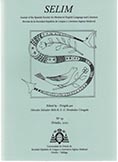Abstract
Abstract: In this paper we demonstrate that “lexomic” techniques of computer-assisted statistical analysis, originally validated for Old English poetry, can be adapted and applied to Anglo-Saxon prose texts. The methods we describe employ hierarchical agglomerative cluster analysis to fi nd patterns of vocabulary distribution. These patterns, represented visually as tree diagrams, or dendrograms, can indicate the source structure or the affi nities of Old English texts. Comparing the dendrogram geometry of multiple editions of the Old English Penitential allows us to determine that the methods can produce consistent results even for critical editions made fr om the collation of multiple manuscripts. Analysis of the Old English translation of Orosius’s Historia demonstrates that the techniques can detect where an autor has used for a given section of his text sources diff erent fr om those of the main body of the text. We conclude that lexomic methods are a useful new tool for the analysis of Old English prose.
Keywords: Lexomics, computer-assisted analysis, digital humanities, penitentials, Orosius, Historiarum adversus paganos libri septem, Alfr edian translations, sources, editions.




